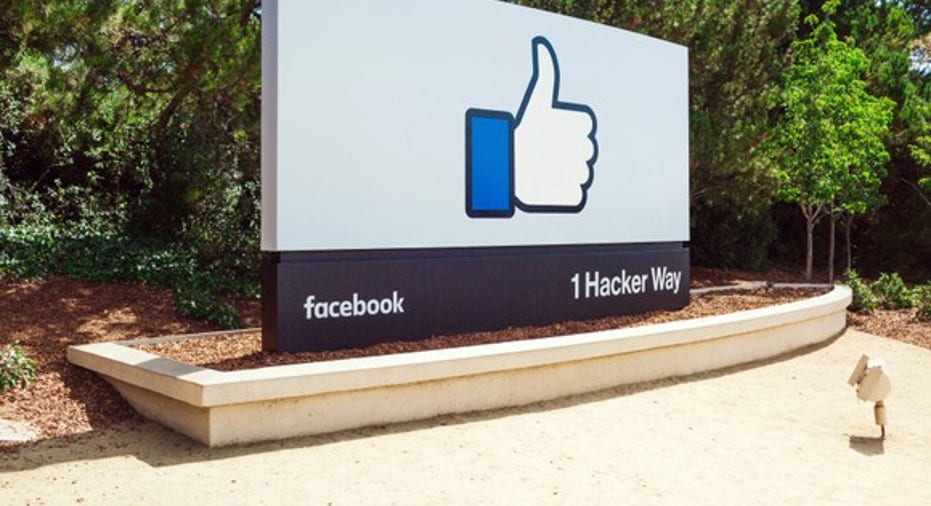How Facebook Continues to Increase Its Ad Prices

Image source: Facebook.
During the second quarter, Facebook (NASDAQ: FB) saw its average price per ad increase 9% year over year. That follows last year when it saw a 220% increase in the average price paid per ad.
The astronomical growth last year was the result of changes the company made to its right-hand column ads, producing a significant impact on the supply/demand balance. This year, the company actually increased ad impressions as a result of user growth and the expansion of ads on Instagram. Ad impressions increased a whopping 49% last quarter. Nonetheless, the average price of those ads was higher.
There are several factors impacting the average price paid per ad -- some positive and some negative. Here's how Facebook continues to increase its ad prices.
The bad news first
Facebook is growing fastest in areas where ad prices are lowest. Last quarter, Facebook's monthly users in its Asia-Pacific and "Rest of World" regions grew 19.4% and 18%, respectively. Comparatively, growth in Europe and the U.S. and Canada geography were just 8.7% and 6.1%, respectively.
That's important because ad prices are considerably lower in Asia-Pacific and Rest of World. Facebook generated $1.77 per user in Asia-Pacific and $1.13 per user in the Rest of World. In Europe the company brought in a much healthier $4.72 per user, and it generated a whopping $14.34 per user in the U.S. & Canada. Granted, there are other factors affecting average revenue per user (ARPU), but ad prices are one of the biggest.
The disparity in growth rates between emerging markets and developed markets is likely putting pressure on the average price per ad as a larger chunk of ad inventory comes from those markets with lower ad prices.
But demand is strong
During the company's second-quarter earnings call, CFO Dave Wehner told analysts, "Advertiser demand was particularly strong in Q2 across a broad range of verticals and advertiser objectives." That follows up on the previous quarter, where Facebook saw "growth in both new customers, as well as existing customers, who are spending more with us on average compared to last year."
Facebook is benefiting from the secular growth of digital ad spending. Last year, digital ad spending grew 20% year over year in the United States.
But Facebook also seems to be winning share of the growing market from competitors like Twitter (NYSE: TWTR). Twitter's management pointed to "increased competition for social marketing budgets" as part of the reason its revenue growth slowed significantly last quarter. That means Facebook and its other advertising platforms like Instagram and Facebook Audience Network are likely taking share from Twitter.
More high-value ads
Wehner also pointed to a shift in time spent on mobile versus desktop as another driver for average ad price increases. Facebook doesn't show the lower-value right-hand column ads on mobile devices, so the average ad shown on a mobile device is naturally higher cost than the average ad on desktop. Mobile monthly active users grew to 92% of users compared to 88.2% last year.
Additionally, Facebook opened Instagram ads in the third quarter of last year. While Instagram still represents a small portion of Facebook's total ad revenue, the influx of inventory is likely improving average ad prices.
A month after opening its advertising API, a marketing partner found that Instagram ad prices were 90% higher than Facebook's on average. Today, marketers still report Instagram ad placements are more expensive than other Facebook ads.
With Facebook showing more high-value ad units as a percentage of total ad impressions, it makes sense that the average price per ad would increase. Couple it with strong growth in demand from marketers in order to fill that high-value inventory, and it's clear why Facebook's ad prices continued to climb last quarter. As those trends continue, investors can expect Facebook's ad prices to continue climbing even as ad impressions continue their robust growth this year.
Next year, Facebook should continue to see ad prices increase, but it will likely be more of a function of demand outstripping supply, as Wehner warned analysts that Facebook is nearing saturation of its ad load on its flagship platform.
A secret billion-dollar stock opportunity The world's biggest tech company forgot to show you something, but a few Wall Street analysts and the Fool didn't miss a beat: There's a small company that's powering their brand-new gadgets and the coming revolution in technology. And we think its stock price has nearly unlimited room to run for early in-the-know investors! To be one of them, just click here.
Adam Levy has no position in any stocks mentioned. The Motley Fool owns shares of and recommends Facebook and Twitter. Try any of our Foolish newsletter services free for 30 days. We Fools may not all hold the same opinions, but we all believe that considering a diverse range of insights makes us better investors. The Motley Fool has a disclosure policy.



















